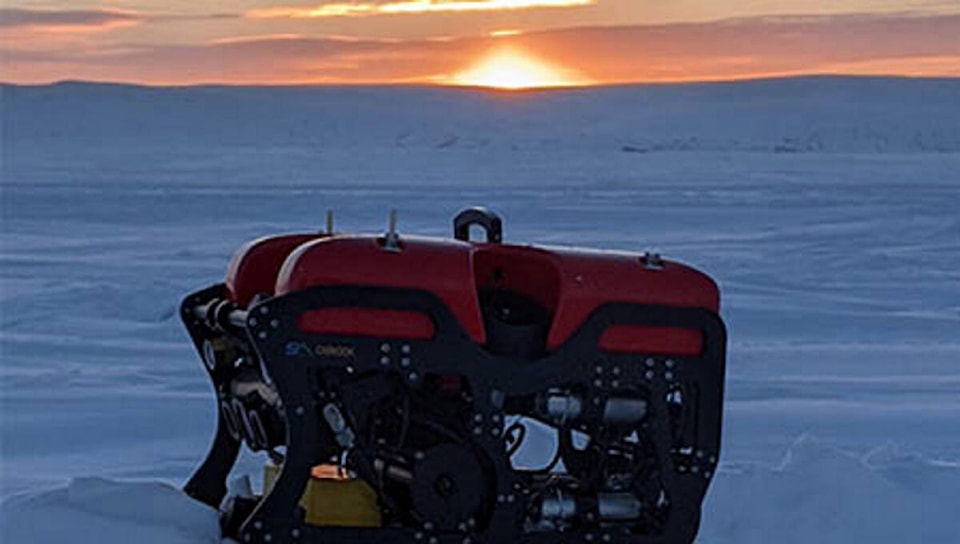When a bulldozer and its operator plunged through the ice at Sabina Gold and Silver’s Back River project on Jan. 17, the depth of the frigid Arctic Ocean waters made recovering the worker’s body problematic.
The British Columbia RCMP Underwater Recovery Team was called upon to carry out the operation.
A remote-operated vehicle that can dive down 300 metres was transported to the site.
The bulldozer and its operator had come to rest 159 metres below the surface, making it the deepest RCMP underwater recovery in history and the police force’s first operational dive above the Arctic Circle.
The ice above was between 1.5 and 2 metres thick. The members of the RCMP dive team were working at temperatures below -40 C with a windchill dipping into the -50s C earlier this month.
The remote-operated vehicle quickly located the piece of heavy equipment and its operator. However, it became entangled in a rope placed as a reference line and couldn’t be freed, according to the RCMP. Consequently, the police force contacted the RCMP National Underwater Recovery Training Centre for assistance. A newer model remote-operated vehicle was shipped to the site. It was able to open the door of the bulldozer and remove the operator.
“Although a tragic circumstance, the combined efforts of the RCMP police divers involved were able to return the operator to his family and provide information for the investigation to prevent these type of accidents in the future,” the Mounties stated.
Supt. Jim Elliott of the B.C. RCMP added, “My condolences to the family, friends and co-workers of the operator. It was through the incredible technical skill and team effort of the RCMP Underwater Recovery Team were able to bring this tragedy to a resolution.”
Elliott noted that the recovery was “one of the most, if not the most complex recovery to date for the RCMP.”
Sabina Gold and Silver declined to reveal the identity of the deceased, but a company spokesperson said the worker was from Eastern Canada.
The bulldozer was being used to build an ice road when it sunk.
The RCMP referred to the original incident as a “workplace accident.” It was reported to the Workers Safety and Compensation Commission (WSCC) for investigation. That agency has two investigators on the case. The purpose of the investigation is “to determine the cause of the incident and whether or not there were any violations of health and safety legislation,” according to WSCC communications manager Maggie Collins. The analysis can take up to a year and information can be shared with the RCMP or other legal authorities upon request, Collins noted.
WSCC will not release any other details pertaining to an ongoing investigation, she said.
